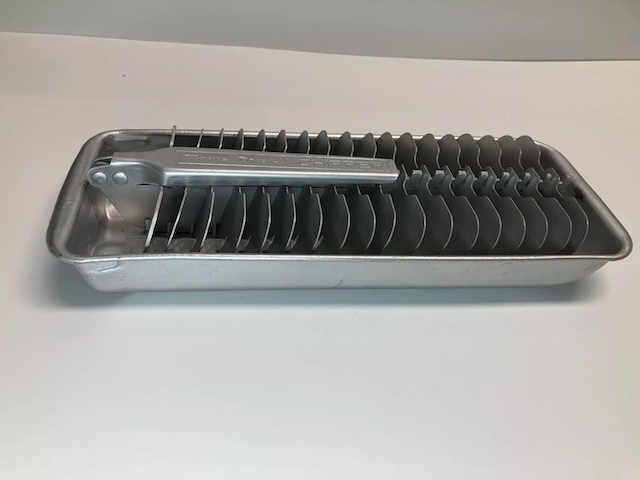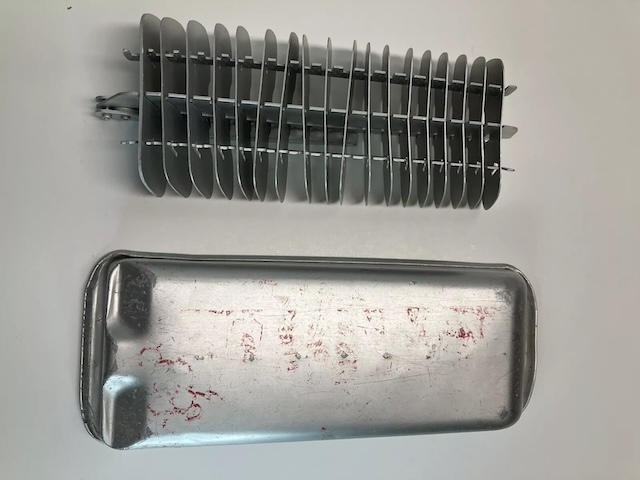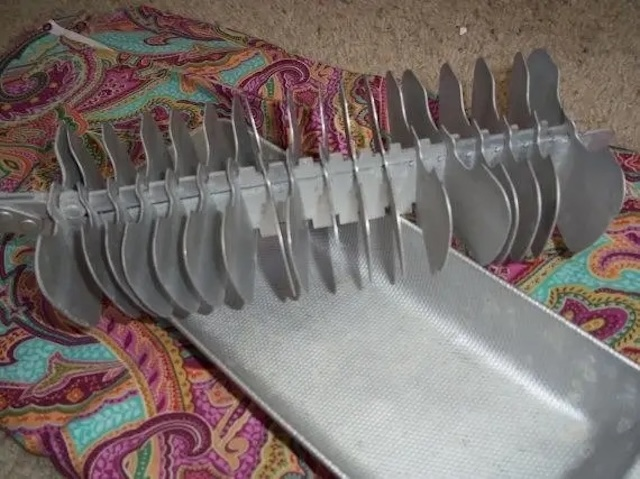If you’ve ever attended a lively summer gathering back in the mid-20th century, you probably remember a certain sleek, metal ice tray in action. Before modern ice makers and silicone molds dominated kitchens, this vintage tray was a staple in every home. Far from being just another kitchen item, the metal ice tray was a symbol of sophistication and practicality, revolutionizing how drinks were chilled. Let’s journey back in time to discover the legacy of this iconic tool.
The Evolution of Chilling Drinks

In a time before kitchen gadgets filled every home, making ice was a bit of a challenge. The introduction of the vintage metal tray marked a significant leap in how families prepared for summer gatherings and kept drinks cool. Unlike today’s trays that require twisting or bending to release cubes, this classic design featured a metal lever that produced perfectly sliced cubes with a simple pull.
Picture this: a sunny afternoon, children playing outside, and the distinct clink of ice cubes falling into a glass pitcher. It was more than just a routine; it was a ritual of hospitality, where every chilled drink brought a sense of community, warmth, and nostalgia.
How It Worked: The Ingenious Design of the Vintage Metal Tray
The vintage metal tray wasn’t just convenient—it was a marvel of engineering. Made from durable aluminum, it was built to withstand repeated use without rusting or bending. Its standout feature was the mechanical lever, which, when pulled, released the ice into neat, uniform slices. To use it, you simply filled the tray with water, placed it in the freezer, and once frozen, pulled the lever for a quick release of perfect ice slices.
This design ensured consistency in the shape and size of the cubes, making it ideal for cocktails, sodas, and iced tea. The slender shape of the slices melted slowly, keeping drinks colder for longer without watering them down. It was an invention that combined style and functionality, embodying the mid-century preference for tools that were simple yet effective.
A Kitchen Staple for Mid-Century Entertaining
The 1950s and 60s were all about entertaining, and having a reliable ice tray was part of the era’s refined art of hosting. As post-war prosperity grew, home entertaining became a social standard, and serving the perfect drink was a sign of good hospitality. Whether it was a backyard barbecue or an impromptu cocktail party, the vintage ice tray was always ready to produce perfectly sliced cubes.
This tray was more than just a tool; it was a symbol of preparedness. Homemakers kept theirs ready in the freezer, anticipating spontaneous visits from neighbors or unexpected gatherings. Its reliability made it a must-have for hosts who took pride in delivering a polished experience to guests.
An Icon of Simplicity and Elegance

There’s something charming about how such a simple tool could carry so much elegance. The polished metal, the satisfying click of the lever, and the smooth ice slices made it as much about the experience as it was about functionality. In an era when durability and craftsmanship were highly valued, this tray stood out—it was built to last, with many still in use today or found in antique shops as prized collectibles.
The metal construction added to its longevity, while the clever lever mechanism made it easy to release ice slices without effort. It represented a time when even the most basic kitchen tools were crafted with pride and attention to detail.
The Legacy of the Vintage Ice Tray
While modern ice makers and flexible trays have replaced most of the vintage trays, the original metal tray holds a special place in history. It’s a reminder of an era when entertaining was a thoughtful art, and even the smallest details were considered. The charm of the vintage tray has endured, making it a collectible item for those who appreciate the nostalgia of mid-century design.
Today, some cocktail enthusiasts and vintage lovers seek out these trays for an authentic touch in their home bars. The appeal goes beyond the ice it produces—it’s about the history and tradition it brings to every drink served. In a world dominated by rapid technology, this simple tray stands as a symbol of lasting quality.
Fun Facts About the Mid-Century Ice Craze

- Divided Sections: The tray’s divided sections allowed for perfectly portioned slices, making it ideal for entertaining.
- Durability: Made from aluminum, it was designed to be used repeatedly, often lasting through generations.
- Cultural Symbol: The tray became an icon of mid-century homes, synonymous with leisurely afternoons, family gatherings, and classic cocktails.
- Essential for Parties: Serving a chilled drink at any moment was part of good hosting, and the tray ensured this could be done with elegance.
- Collector’s Treasure: Today, these trays are sought-after by collectors, with some being displayed as vintage kitchen décor.
Why the Vintage Tray is a Timeless Treasure
The vintage metal ice tray was more than just a kitchen gadget; it was a key part of creating cherished memories. It contributed to countless summer afternoons and holiday parties, offering a touch of elegance with every slice of ice. For those who still own one, it’s more than a tool—it’s a family heirloom, passed down with stories of gatherings, laughter, and nostalgia.
Even now, this classic tray symbolizes a time when life was a bit slower and simpler. It reminds us that true hospitality is about more than just serving drinks—it’s about creating experiences that are as cool and refreshing as the ice itself.
Conclusion: A Cool Slice of Mid-Century History
The vintage metal tray stands as more than just a functional kitchen gadget—it’s a slice of mid-century history. It reflects an era that valued simplicity, durability, and the joy of creating lasting memories with family and friends. For those who’ve used it, the tray is a tangible link to a past where convenience meant thoughtful moments, one perfectly chilled drink at a time.
While it may now be considered a relic, its legacy endures in the memories it helped create. It’s a reminder of an era that celebrated quality, craftsmanship, and the art of entertaining with a touch of elegance.


